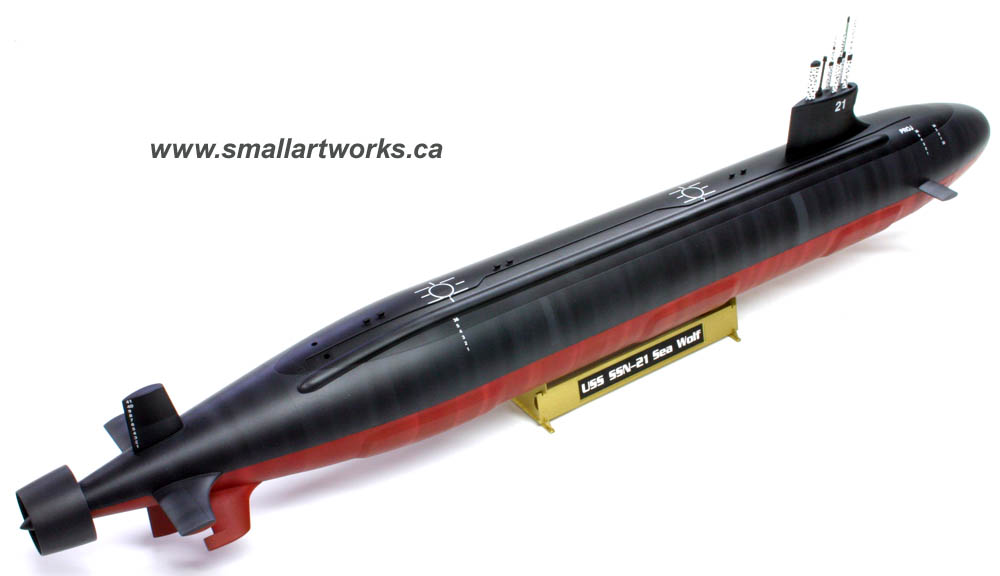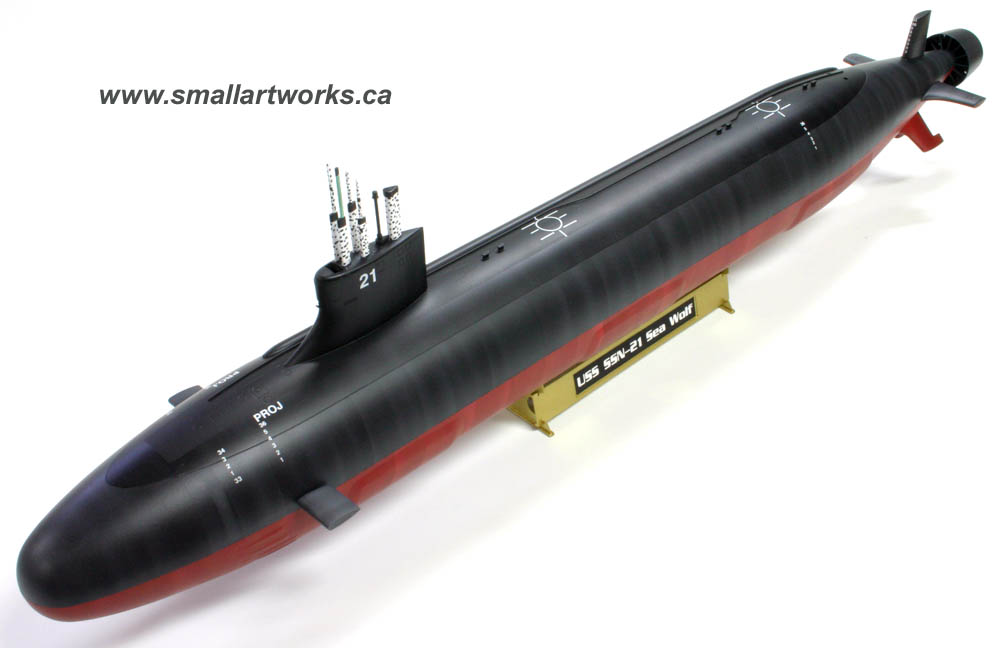USS SSN-21 Seawolf
USS SSN-21 Seawolf
|
|

|
There are essentially three main colours to the ship. Red on the bottom half and the top half is divided at the waterline by very dark gray and what I call "off-black", which means not QUITE as dark as pure black, but very close. My limited research has shown several variants or the appearance of variants, however those basic colours do seem to be correct despite not being able to obtain any significant proof of the paint job applied to all parts of the real sub. The kit's instructions were very vague and incomplete with respect to the colour scheme for my liking. My choices of colours seem to be reasonably accurate from what I could find in a short time on the Internet. I do know the decals supplied with the kit are not correct (wrong font, oversized etc.), but I didn't have the time needed to have new ones made. (They even misspelled the word "submarine" on the poorly executed display base decal, prompting me to make and print off a new sticker for the nameplate!) But these colours alone are not enough, as there needs to be some kind of visual texture applied to make the model more dynamic in appearance. Using a bit of artistic license, each of the three main colours is broken up using streaked layers of differently tinted colours with an airbrush, and sections masked off to suggest paneling and random weathering without actually making the boat look dirty. I resisted using rust colours and severe weathering normally associated with scale modeling because I wanted the sub to still look "pretty" as a display piece rather than purely realistic in nature, but still give it a sense of scale and look less boring. This was to be a display model rather than a special effects miniature. Three different shades of red were first applied to the bottom, then working up and masking off the previous colours, three shades of gray in the middle and then the top deck and sail sprayed with different shades of black. The shades of black were created using different types of paint as well as adding a bit of gray to the black paint. Different types of clear dulling finishes were also used to separate the shades as well, after the colour coats were applied. The photos don't really show these very subtle differences but you can see them when you view the model in person. |
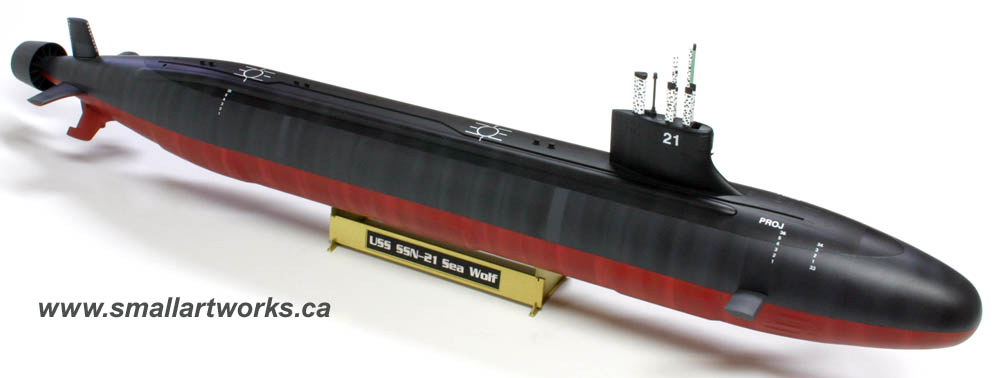
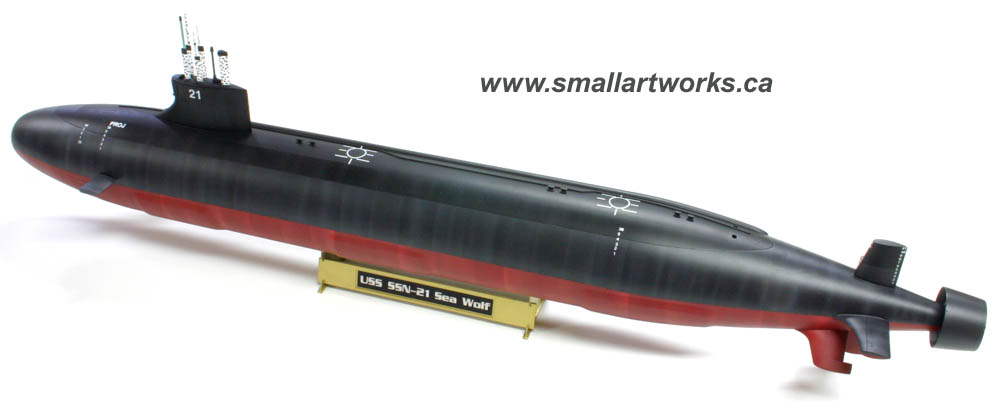
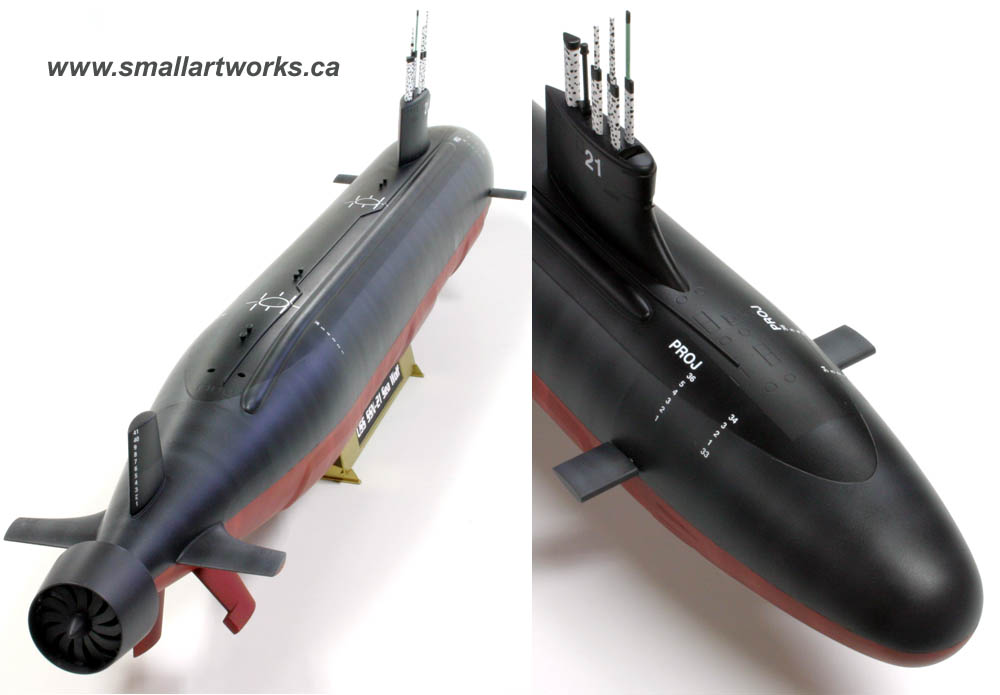
|
Before gluing the hull parts together, I glued a strip of hard foam onto the inside under the top deck area. The ballast tank apertures on the bottom of the hull were hollowed out so that water could flow into and flood the entire model, with the foam alone providing buoyancy. This allows for the sub to run mostly submerged, with only the top deck portion of the model showing above the waterline (division between the black and the gray) just as the full scale ship does when surface running or docked. Power is provided by attaching a pair of common torpedo-style self-contained toy motors to a set of receptacles buried in the keel (barely visible in the side view at the top of this page). The rudder was also made movable to steer the craft and the front diving planes can be adjusted to maintain a realistic attitude when running. |
